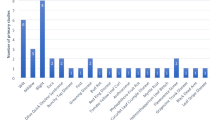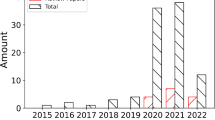Abstract
This paper deals with the development and evaluation of a disease model to forecast the risk and incidence associated with tomato gray leaf spot (Ascochyta lycopersici Brun) - one of the reasons for significant tomato yield loss in the Mediterranean area and in other countries. It comprises a leaf wetness model, a disease occurrence warning model and a disease incidence model. The methodology followed was based on studying plant disease epidemiology to clearly understand how the disease progresses, analyzing input parameters used in the published literature and selecting the most suitable methods for calibrating the model thresholds and evaluating its performance. The developed sub-models were evaluated according to the following performance indexes: (1) the area under the receiver operating characteristic curve for choosing the threshold of the leaf wetness model using three methods (a classification tree, support vector machines and the Naive Bayes method); (2) the root mean square error; and (3) the mean absolute error, both for evaluating the curve fitting based on disease incidence models (using Power, Exponential, Polynomial, Gaussian, Logistic and Gompertz approximations). The obtained results provided a calibrated relative humidity threshold of 84.5% from the classification tree method, while the best fitting function was the Logistic equation providing a root mean square error of 3.17 and a mean absolute error of 2.54; the evaluation results of two plant seasons in 2017 and 2018 proved that the Logistic equation can simulate gray leaf spot incidence good, with an R2 of 0.97 and 0.92, and a RMSE of 2.7 and 1.8. This work contributes to tomato gray leaf spot management by providing a basis for decision support to help growers make timely and precise decisions and thus avoid major economic losses.







Similar content being viewed by others
References
Bassimba, D. D. M., Intrigliolo, D. S., Dalla Marta, A., Orlandini, S., & Vicent, A. (2017). Leaf wetness duration in irrigated citrus orchards in the Mediterranean climate conditions. Agricultural and Forest Meteorology, 234, 182–195. https://doi.org/10.1016/j.agrformet.2016.12.025.
Bentes, J. L., & Matsuoka, K. (2005). Histologia da interação Stemphylium solani e tomateiro. Fitopatologia Brasileira, 30, 224–231.
Bregaglio, S., Cappelli, G., & Donatelli, M. (2012). Evaluating the suitability of a generic fungal infection model for pest risk assessment studies. Ecological Modelling, 247, 58–63. https://doi.org/10.1016/J.ECOLMODEL.2012.08.004.
Bregaglio, S., Donatelli, M., Confalonieri, R., Acutis, M., & Orlandini, S. (2011). Multi metric evaluation of leaf wetness models for large-area application of plant disease models. Agricultural and Forest Meteorology, 151(9), 1163–1172. https://doi.org/10.1016/j.agrformet.2011.04.003.
Bregaglio, S., Titone, P., Cappelli, G., Tamborini, L., Mongiano, G., & Confalonieri, R. (2016). Coupling a generic disease model to the WARM rice simulator to assess leaf and panicle blast impacts in a temperate climate. European Journal of Agronomy, 76, 107–117. https://doi.org/10.1016/j.eja.2016.02.009.
Bulger, M. A. (2008). Influence of Temperature and Wetness Duration on Infection of Strawberry Flowers by Botrytis cinerea and Disease Incidence of Fruit Originating from Infected Flowers. Phytopathology, 77(8), 1225. https://doi.org/10.1094/phyto-77-1225.
Emilio, M., Franco, E., Troncozo, M. I., Marianela, S., López, Y., Lucentini, G., et al. (2017). A survey on tomato leaf grey spot in the two main production areas of Argentina led to the isolation of Stemphylium lycopersici representatives which were genetically diverse and differed in their virulence. European Journal of Plant Pathology, 149, 983–1000. https://doi.org/10.1007/s10658-017-1248-z.
Garin, G., Fournier, C., Andrieu, B., Houls, V., Robert, C., & Pradal, C. (2014). A modelling framework to simulate foliar fungal epidemics using functional-structural plant models. Annals of Botany, 114(4), 795–812. https://doi.org/10.1093/aob/mcu101.
Ghafoori, Z., Erfani, S.M., Rajasegarar, S., Bezdek, J.C., Karunasekera, S., Leckie, C. (2018). Efficient Unsupervised Parameter Estimation for One-Class Support Vector Machines. In IEEE Transactions on Neural Networks and Learning Systems. (pp. 1–14).
Gil, R., Bojacá, C. R., & Schrevensc, E. (2011). Suitability evaluation of four methods to estimate leaf wetness duration in a greenhouse rose crop. In Acta Horticulturae (pp. 797–804). https://doi.org/10.17660/ActaHortic.2011.893.87
Gleason, M. L. (1995). Disease warning system. Plant Disease, 79(2), 113.
Han, C. Z. (2007). Identification and biological characteristic analysis of pathogen causing gray leaf spot of tomato. Baoding: Hebei Agriculture univeristy.
Hirst, J. M. (1953). Changes in atmospheric spore content: diurnal periodicity and the effects of weather. Transactions of the British Mycological Society, 36(4), 375–IN8.
Horsfall, J.G., & Heuberger J.W (1942). Causes, effect and control of defoliation on tomatoes. Connecticut Agricultural Experiment Station 456, 183–223.
Huang, J., & Ling, C. X. (2005). Using AUC and accuracy in evaluating learning algorithms. IEEE Transactions on Knowledge and Data Engineering, 17(3), 299–310.
Huber, L. and Gillespie, T.J. (1992). Modeling Leaf Wetness in Relation to Plant Disease Epidemiology. Annual Review of Phytopathology, 30, 553–577. https://doi.org/10.1146/annurev.py.30.090192.003005.
Jeger, M. J., & Viljanen-Rollinson, S. L. H. (2001). The use of the area under the disease-progress curve (AUDPC) to assess quantitative disease resistance in crop cultivars. Theoretical and Applied Genetics, 102(1), 32–40. https://doi.org/10.1007/s001220051615.
Kim, B. S., Cho, H. J., Hwang, H. S., & Cha, Y. S. (1999). Gray Leaf Spot of Tomato Caused by Stephylium solani. Plant Pathology, 15(6), 348–350.
Kranz, J., & Rotem, J. (2012). Experimental techniques in plant disease epidemiology. Berlin: Springer Science & Business Media.
Li, B. J., Zhou, Y. F., Zhao, Y. J., & Gao, W. (2009). Occurrence and prevention of gray leaf spot on tomato. China Vegetables, 17, 24–26.
Li, M., Zhao, C., Qiao, S., Qian, J., & Yang, X. (2010). Estimation model of leaf wetness duration based on canopy relative humidity for cucumbers in solar greenhouse. Transactions of the Chinese Society of Agricultural Engineering, 26(9), 286–291.
Li, T., Li, J., Liu, Z., Li, P., & Jia, C. (2018). Differentially private naive bayes learning over multiple data sources. Information Sciences, 444, 89–104.
Li, X. Q., Tian, Z. L., Zheng, J. R., & Zheng, J. W. (2015). Biological characteristics and fungicide screening of Stemphylium lycopersici causing tomato grey leaf spot. Acta agriculturae Zhejiangense, 27(11), 1953–1959.
Loh, W. Y. (2011). Classification and regression trees. Wiley Interdisciplinary Reviews Data Mining & Knowledge Discovery, 1(1), 14–23.
Madden, L. V., Hughes, G., & Irwin, M. E. (2000). Coupling disease-progress-curve and time-of-infection functions for predicting yield loss of crops. Phytopathology, 90(8), 788–800.
Madden, L. V., & Campbell, C. V. (1990). Nonlinear Disease Progress Curves, In Epidemics of Plant Diseases (pp. 181–229). Berlin, Heidelberg: Springer.
Magarey, R. D., Sutton, T. B., & Thayer, C. L. (2005). A Simple Generic Infection Model for Foliar Fungal Plant Pathogens. Phytopathology, 95(1), 92–100. https://doi.org/10.1094/PHYTO-95-0092.
Mammone, A., Turchi, M., & Cristianini, N. (2009). Support vector machines. Wiley Interdisciplinary Reviews: Computational Statistics, 1(3), 283–289.
Montone, V. O., Fraisse, C. W., Peres, N. A., Sentelhas, P. C., Gleason, M., Ellis, M., & Schnabel, G. (2016). Evaluation of leaf wetness duration models for operational use in strawberry disease-warning systems in four US states. International Journal of Biometeorology, 60(11), 1761–1774. https://doi.org/10.1007/s00484-016-1165-4.
Moragrega, C., Puig, M., Ruz, L., Montesinos, E., & Llorente, I. (2018). Epidemiological features and trends of brown spot of pear disease based on the diversity of pathogen populations and climate change effects. Phytopathology, 108(2), 223–233.
Nasehi, A., Kadir, J. B., Abidin-Zainal, M. A., Wong, M. Y., & Mahmodi, F. (2012). First report of tomato gray leaf spot disease caused by stemphylium solani in malaysia. Plant Disease, 96(8), 1226.
Sentelhas, P. C., Dalla Marta, A., Orlandini, S., Santos, E. A., Gillespie, T. J., & Gleason, M. L. (2008). Suitability of relative humidity as an estimator of leaf wetness duration. Agricultural and Forest Meteorology, 148, 392–400. https://doi.org/10.1016/j.agrformet.2007.09.011.
Shen, Y. M., Yang, Y. C., Fu, Y. J., & Hung, T. H. (2012). First report of Stemphylium solani causing leaf spot of Kalanchoe blossfeldiana in Taiwan. New Disease Reports, 25(10).
Suknovic, M., Delibasic, B., Jovanovic, M. et al. Comput Stat (2012) 27: 127. https://doi.org/10.1007/s00180-011-0242-8
Sun, X. T., Zhang, L., Zhang, J. Z., & Lu, G. (2016). First report of tomato gray leaf spot caused by Stemphylium lycopersici in ZheJiang Province, China. Plant Disease, 100(1), 227.
Wang, H., Sanchez-Molina, J. A., Li, M., & Díaz, F. R. (2019). Improving the performance of vegetable leaf wetness duration models in greenhouses using decision tree learning. Water (Switzerland), 11(1). https://doi.org/10.3390/w11010158.
Ward, J. M. J., Laing, M. D., & Rijkenberg, F. H. J. (1997). Frequency and timing of fungicide applications for the control of gray leaf spot in maize. Plant Disease, 81(1), 41–48.
Williams, J. E., Swaluw, E. V. D., & Sauter, F. (2015). Updating the calculation of ammonium particle formation in the Operational Priority Substances (OPS) source-receptor model. https://doi.org/10.13140/2.1.5035.5522.
Yang, Q. F., Pan, G. H., Ru, X. J., Yin, X. G., Zhang, B., & Zhang, X. R. (2012). Occurrence and prevention of tomato gray leaf spot in Chong Qin area, China. South China Agriculture, 6(6), 28–29.
Yang, X., Li, M., Zhao, C., Zhang, Z., & Hou, Y. (2007). Early warning model for cucumber downy mildew in unheated greenhouses. New Zealand Journal of Agricultural Research, 50(5), 1261–1268. https://doi.org/10.1080/00288230709510411.
Yarnold, A., & Linden, P. R. (2018). Estimating causal effects for survival (time-to-event) outcomes by combining classification tree analysis and propensity score weighting. Journal of Evaluation in Clinical Practice, 24(2), 380–387.
Zhao, C. J., Li, M., Yang, X. T., Sun, C. H., Qian, J. P., & Ji, Z. T. (2011). A data-driven model simulating primary infection probabilities of cucumber downy mildew for use in early warning systems in solar greenhouses. Computers and Electronics in Agriculture, 76(2), 306–315. https://doi.org/10.1016/j.compag.2011.02.009.
Zhao, L. P., Zhao, T. M., Yu, W. G., Yang, M. L., & Wang, Y. L. (2014). Research progress in gray leaf spot of tomato. Jiangsu Journal of Agricultural Sciences, 30(6), 1524–1530.
Acknowledgements
This work has been developed within the IoF2020-Internet of Food and Farm 2020 Project framework, and it was funded by the European Union’s Horizon 2020 Framework Program (Grant Agreement no. 731884) and by the National Natural Science Foundation of China (31401683). The authors would like to thank the Experimental Station of the Cajamar Foundation for all of their invaluable help.
Author information
Authors and Affiliations
Corresponding authors
Ethics declarations
Our manuscript “Design of a plant disease model that models leaf wetness duration, disease onset and disease incidence: a case study on tomato gray leaf spot” has no potential conflicts of interest (financial or non-financial) and did not involve research with human participants and/or animals.
Rights and permissions
About this article
Cite this article
Wang, H., Sanchez-Molina, J.A., Li, M. et al. Development of an empirical tomato crop disease model: a case study on gray leaf spot. Eur J Plant Pathol 156, 477–490 (2020). https://doi.org/10.1007/s10658-019-01897-7
Accepted:
Published:
Issue Date:
DOI: https://doi.org/10.1007/s10658-019-01897-7




